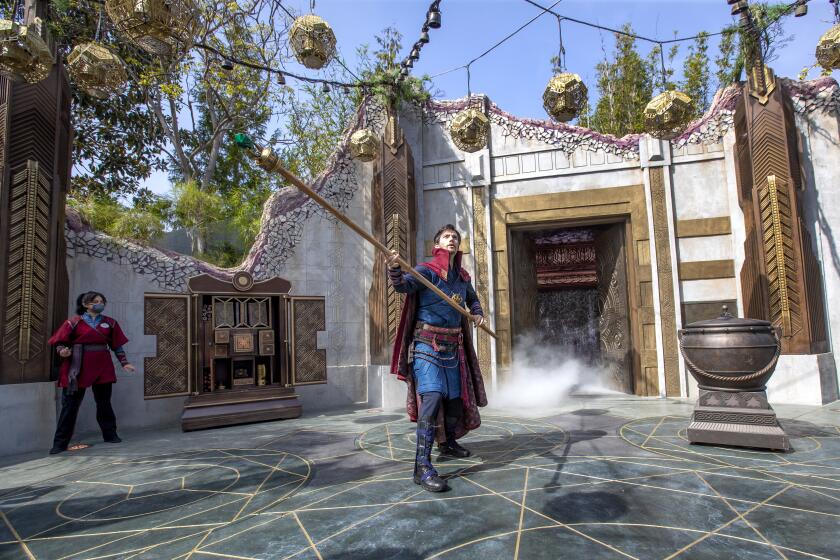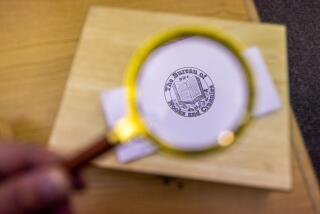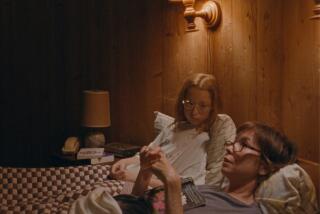Don’t miss ‘The Nest,’ the best live-action video game in Los Angeles
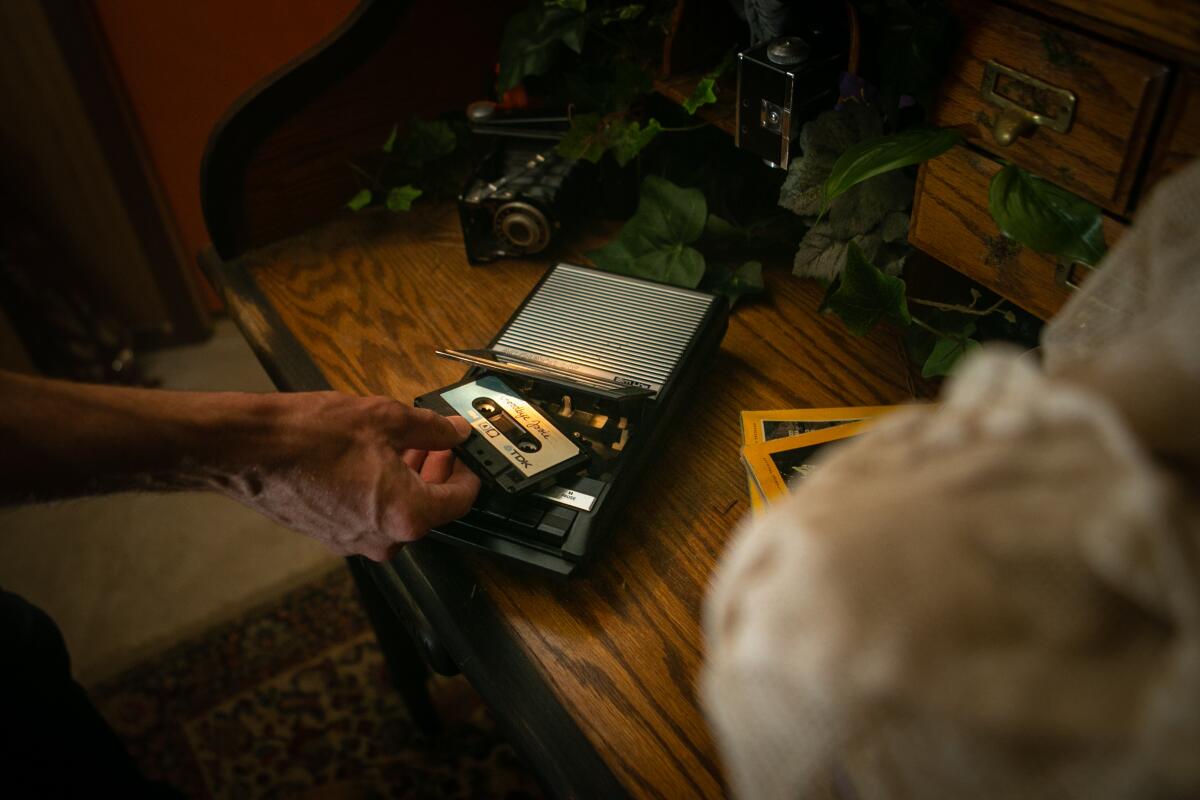
- Share via
A Lite-Brite is not just a retro toy. The little box with its cloaked but ready illuminated panel is a storytelling device, through the images it can create and the memories it can evoke.
It’s also a very handy gadget to have if you’re building an escape room, as its colorful pegs instantly attract the attention of the audience. So when we encounter one in a staged nursery inside “The Nest,” we may instantly wonder what role it will fill or what we may need to craft on it. After all, we’re moving from mini room to mini room to uncover a story.
But puzzles matter less than tone in “The Nest,” even if experiencing this participatory theatrical production, staged in a storage facility just outside of downtown, at times can feel like being in an escape room, or participating in a podcast, the narration unfolding via cassettes and the environments that envelop us.
In some ways, “The Nest” is like a live-action video game, tiny rooms full of personal ephemera for us to explore. In others, it is a glimpse at the future of all experiential entertainment as theaters and theme parks continue to wed the personal with the universal.
Technically, “The Nest” is a work of immersive theater that pulls most heavily from the game and theme park spaces. At its core is a puzzle, but there is no grand mystery to unravel, no trick to reveal. Instead, “The Nest” asks us to piece together a life, to think deeply about our own memories and the ones we’re striving to create.
“The Nest” follows the story of a woman named Josie, who is presented as a long lost, previously unknown relative who has died. We’re tasked with exploring her storage unit , an actual storage unit that’s been transformed into a magical place where school lockers and forests intermingle. In the production created by the Scout Expedition Co., cluttered boxes give way to childhood nooks, classrooms and visions of road trips and Christmas pasts.
Consider it a storage unit turned reverie turned extremely intimate and personal theater, where attendees slyly become participants on their own individual quests.
“It understands, better than most immersive theater pieces, that the audience needs to have a role in the world,” says Noah J. Nelson, founder of online immersive destination No Proscenium, which has tracked “The Nest” through its various productions over the last four years. Nelson compares “The Nest” to the exploratory game “Gone Home,” in which players scour over personal items to discover the story of two siblings.
“It takes more magic realism narrative risks than most escape rooms,” Nelson says of “The Nest.” “Then there is the intimacy factor.”
“The Nest” is theater at its most private — only two theatergoers can explore the space at a time — and an active one. You’ll be asked to step into a darkroom and develop a photo, or construct a map that seems to come alive. Get stuck, and a phone will ring featuring in-character suggestions, a sort of real-life hint line. Ultimately, “The Nest” is a reminder that we are all made of stories.
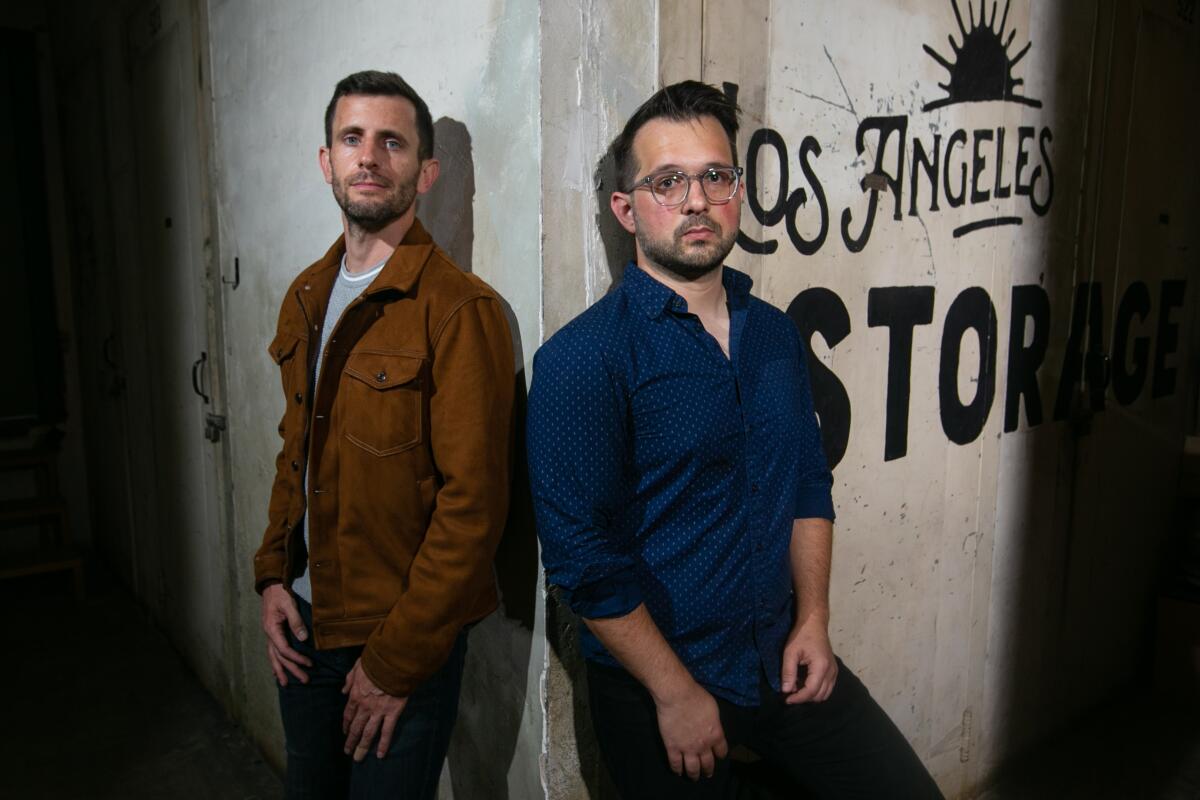
“It’s wholly unique to you,” says Jeff Leinenveber, co-creator of the show with Jarrett Lantz. The two met while working with Walt Disney Imagineering, the company’s arm to devoted to theme park experiences.
“Every guest that comes to see ‘The Nest’ gets a sense of Josie’s story, and how that happens is fully dependent on every individual guest, depending on what kind of player they are or what their background is. Each guest receives the same narrative, but they may understand it in very different ways.”
By spending an hour devouring someone’s life, “The Nest” asks what we can better learn about our own hopes, dreams and desires. It’s currently running through mid-September, its initial block of performances cut short by the pandemic.
Versions of “The Nest” have been playing in Los Angeles since 2017, but in 2021 it’s operating in its most poignant form; it hits harder now that we have spent so much time at home being surrounded by stuff. No doubt many of us re-examined our living spaces over the last year and a half, reassessing what was clutter and what was truly meaningful, and likely coming to some surprising conclusions.
Sit back and enjoy the ride? No more. From Disney’s new Star Wars: Rise of the Resistance to Japan’s upcoming “living video game” Super Nintendo World, theme-park audiences must participate to get the full experience.
Key to the world-building of “The Nest” is the way in which the storage unit was filled — many of Josie’s things were purchased from actual liquidated storage units, and the finds themselves helped create the story. When the team came across some school lockers, for example, they decided to use them to capture how Josie spent her days at class daydreaming of the natural world beyond the walls by surrounding them with greenery.
“The space is a representation of Josie’s mind,” says Leinenveber. “When you first go in, there are several locked doors, but as you progress the story you’re unlocking decades or chapters of her life, going along the ride with her as she pieces together her own life.”
“The Nest” keenly understands that a home isn’t defined by any one era or decade, but by a culmination of newly purchased trinkets and hand-me-down items, the latter often more priceless to their owner. It also understands that one object or memory can conjure a nostalgic world in our imaginations.
“We don’t know Josie,” says Lantz. “We never see Josie, but we’re finding all these objects, we’re hearing her voice and we’re putting together the story of her in our head. People then kind of create her in the image of their own mother or their sister or a friend. Just like when you’re reading a book. It’s the same idea here. It feels personal learning about her life because she’s not just a random character. She just lives in your head.”
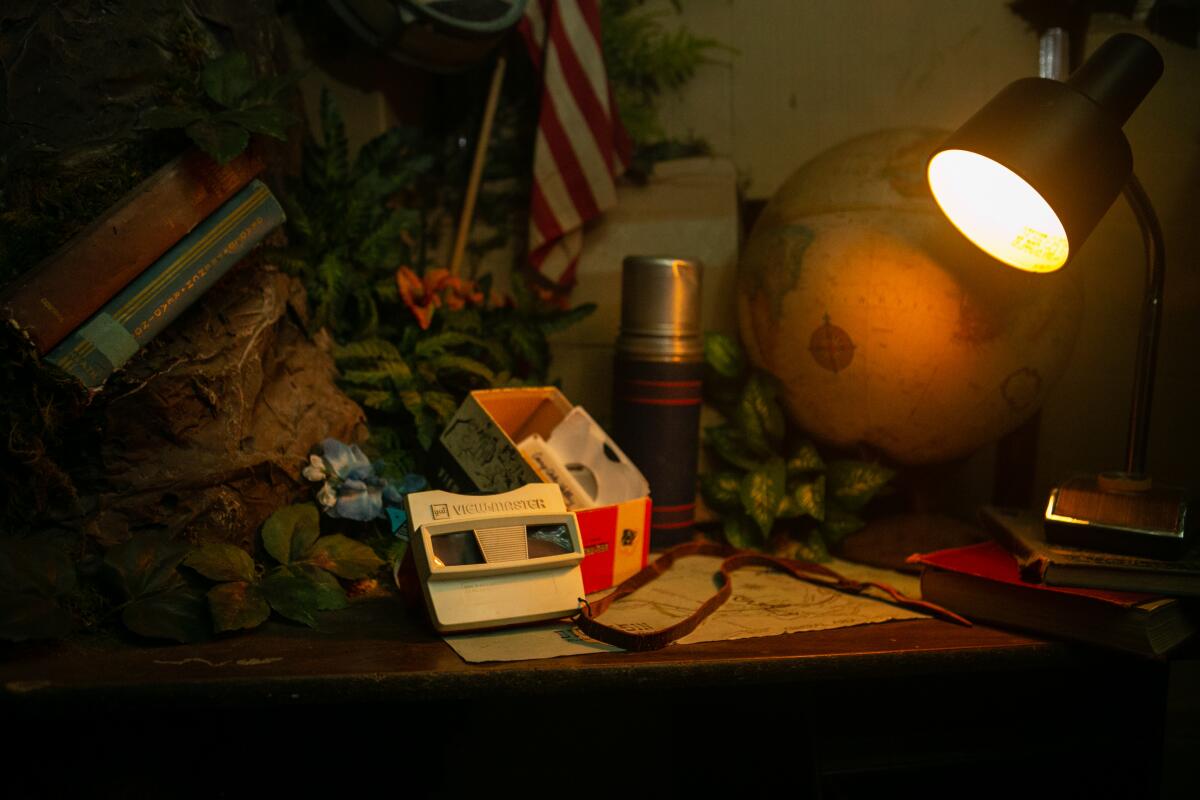
In “The Nest,” what a Lite-Brite means to Josie is no less important than what it may mean to you. And somewhere amid the collection of toys, objects, letters, books, notebooks, plushies and holiday lights will be something that will likely stoke some memory. “The power of seeing an object from your childhood can transport you to the exact place, the exact smells,” Leinenveber says. “The smallest details are transportive.”
We’re prodded along the story via audiotapes, and as we listen to Josie’s aural journals multiple love stores unfold, ones that touch on various fears — loneliness, commitment — as well as her personal passions and hobbies, some that went unexplored. It allows attendees to get a sense of the various crossroads Josie faced, and where she played it safe or where she embraced the unknown. There is, of course, a melancholic bent, but that’s clear from the start, as we know we’re investigating a storage unit of someone who died alone, but that doesn’t mean she didn’t die full of life.
There is no great drama in “The Nest,” and that may be the key to its success. Josie isn’t revealed to have lived some double life. She was normal, like most of us, and struggled, like all of us, and this is ultimately one of the core appeals of stories that unfold via an environment. They don’t need standard beginnings, middles and ends because they’re primarily narratives designed to inspire our own thoughts and conversations.
Think of those early pandemic Zoom calls when we finally got a peek into the home of a co-worker or an acquaintance via a video chat and tried to conjure the narrative of their lives by their surroundings. “The Nest” is sort of like that, but without the awkward conversation and stifling screen, allowing us to roam free in a small space. The relatively light but downcast tone allows for room to contemplate the story without worrying about a complicated plot, and time to linger and wonder about tangible objects.
“At the heart of it all is this sad, but beautiful, story about a very particular life,” Nelson says. “Which makes it novelistic in a way that so few anythings are these days.”
“The Nest” is the rare piece of immersive theater to be recognized with an award from the Themed Entertainment Assn., which has lauded New York’s site-specific theatrical production “Sleep No More” but more famously recognizes work at major theme parks such as those from Disney and Universal.
But like a theme park or a video game, “The Nest” pulls from multiple mediums, and shows how environments can be used to not only tell stories, but make them feel personal to the ticket buyer. What “The Nest” does on a tiny scale — creates a sense of intimacy — is precisely a problem larger providers, from art collective-turned-themed-storytellers Meow Wolf to Disney, are aiming to solve.
Disney’s Spider-Man ride continues the park’s shift toward interactive, game-like experiences. Black Panther warriors inspire.
Designers today are trying to create play-focused stories that feel tailored to one’s individual experience. Evidence of this, for instance, can be seen in Disney’s plan to launch a two-day, fully-immersive “Star Wars” story-hotel next year in Florida.
“The Nest” is powerful because it understands that this isn’t necessarily achieved by special effects, elaborate puzzles or even dramatic stories; one can simply reframe how we look at ordinary objects. Each one is hiding its own tale.
'The Nest'
More to Read
Updates
1:48 p.m. Aug. 4, 2021: The story was updated to note that “The Nest” was extended through mid-September.
The biggest entertainment stories
Get our big stories about Hollywood, film, television, music, arts, culture and more right in your inbox as soon as they publish.
You may occasionally receive promotional content from the Los Angeles Times.
